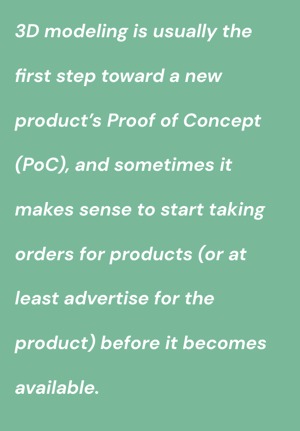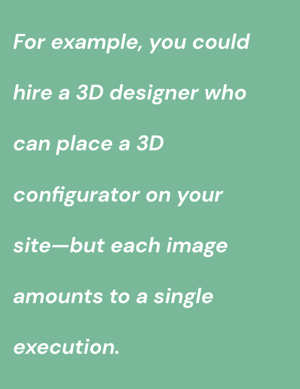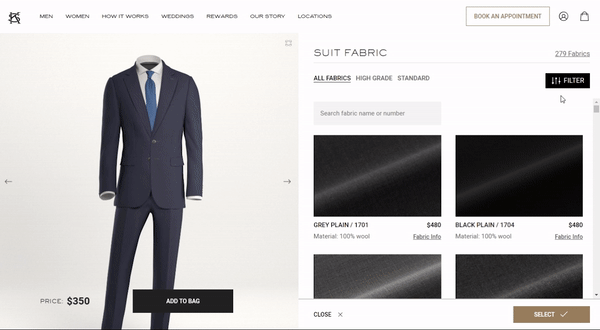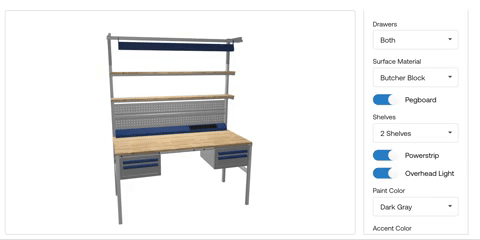Product Visualization Software: It's More than Just Imagery
Flawless 3D product visualization still looks a bit like something out of a science fiction movie, so it’s easy to assume that the chief selling point is the “wow” factor. But if the technology were only about twirling images around in cyberspace, eCommerce companies would have lost interest a long time ago.
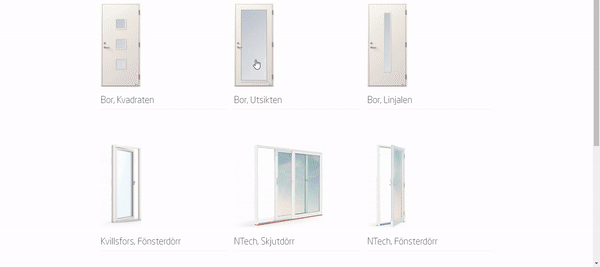
Yes, the imagery of a high-quality photorealistic rendering is powerful and engaging, but more importantly, a visual product configurator is an extremely effective way to sell products online and create a more engaging customer experience. More than a passing fad, product visualization is quickly becoming an eCommerce standard.
Here’s why…
Customizability
Product visualization software enables your customers to take highly customizable products (e.g., furniture, complex equipment, and custom apparel) and construct a visual model based on their specifications in real time. They can change colors, swap component parts, add special features, change textures and fabrics, and more—all with the click of a button.
Stop and think about how useful this can be, even if you’re selling a product with just a handful of customizable parts. For example, if you’re selling a desk chair with:
- 3 options for headrests
- 6 options for colors
- 2 options for fabrics
...you’ve got 36 different configurations for a single product!
[ 3 Headrests X 6 Colors X 2 Fabrics = 36 Possible Configurations ]
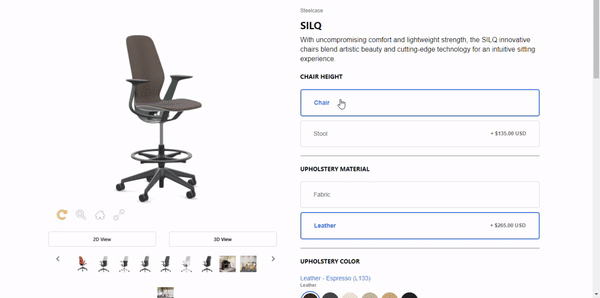
Now, if you sell just 5 different lines of desk chairs with 36 different configurations, that’s 180 different professional photos you’d have to take in order to really show your customers what they’re getting. Then, as you grow and expand your product line, you’ll have to multiply the number of photos. At a certain point, scheduling photoshoots for every product variation goes from unprofitable to impossible.
Considering that companies like Herman Miller and Hangout Lighting offer thousands upon thousands of different possible product configurations, it’s no wonder they rely on product visualization software (both are Threekit customers, by the way). After all, no sane Product Manager would ask accounting to pay for 10,000+ photos, and the only other option (aside from product visualization software) is to ask customers to imagine what their configuration would look like. Needless to say, it would be hard to compete using that kind of go-to-market strategy.
Viewable Component Parts
When you’re selling a physical product where individual components are a key selling tool, such as a complex mechanical device, your customers can explode the image to show detailed renderings of each component part.
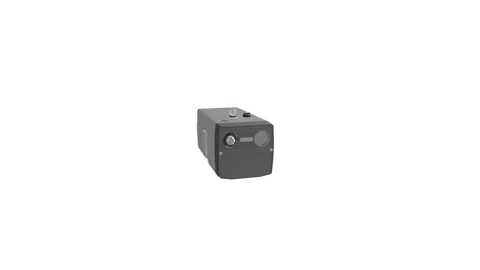
The other cool thing? You can reuse those parts when it’s time to build 3D visuals for similar products that use the same parts. That makes your product visualization efforts highly scalable.
Augmented Reality
Augmented reality (AR) is perfect for online furniture sales or any product that requires customers to project a 3D product rendering against the real-world background of their homes. In other words, if you’re selling a couch, your customers can see what that couch will look like in their living room before placing the order. This way, they can know how it works in their space before deciding to buy.
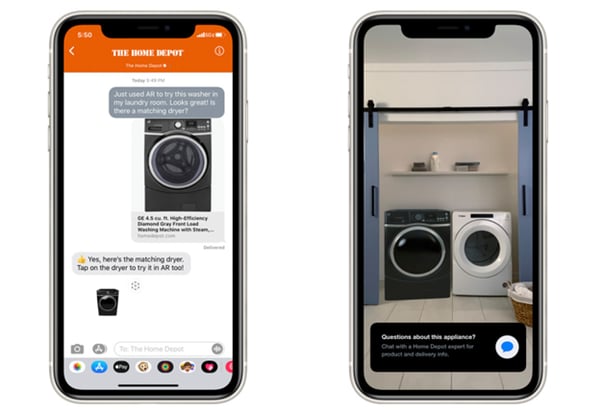
What makes AR such a successful selling tool? One study found that 71% of buyers are more confident in their buying decisions when they use an AR tool, and product visualization software gives them that option.
Safety & Convenience
It’s not only more convenient to shop online. In the era of Covid-19, it’s a whole lot safer—no mask required. The trouble with eCommerce is that shoppers don’t always know what they’re getting before they place an order. If they have any doubt about getting what they want, brick-and-mortar retailers can sweep in and steal the business.
Product visualization software helps eliminate that doubt, giving customers a clear understanding of what they’re ordering so they won’t be disappointed. That way, they’re free to enjoy the safety and convenience that comes with online shopping.
Product Bundling
Do you sell certain products that go together like peaches and cream? If you sell, say, a desk chair as well as a desk, you can use 3D visualization software to see what different chairs and desks look like side by side. This can increase the average order value if you do it right.
Go to Market Faster
3D modeling is usually the first step toward a new product’s Proof of Concept (PoC), and sometimes it makes sense to start taking orders for products (or at least advertise for the product) before it becomes available. With 3D modeling, you can do just that—getting your online marketing in order while you work on production. Even if you don’t begin taking orders before you go into production, you can get all your ducks in a row so your go-to-market strategy moves along like clockwork.
3D Product Visualization Makes for Great Advertising
3D display ads have been shown to drive 3 times more engagement than regular ads. That’s why Threekit has partnered with Google to allow our customers to create ads using 3D product visuals. That means our clients’ shoppers can zoom, rotate, and expand 3D products within a Google advertisement itself. This means they can engage with products in a whole new way, and greater engagement means higher conversions.
Only Software Can Do It All
Here’s the deal. There are alternative solutions that will help you achieve some of the seven benefits listed above without 3D product visualization software. For example, you could hire a 3D designer who can place a 3D configurator on your site—but each image amounts to a single execution. It typically doesn’t include the scalability that comes with rendering components parts, it doesn’t include augmented reality, and you won’t be able to automatically embed your renderings into a Google ad.
Instead of going the 3D imaging route, you could hire a photographer who could create a series of images of various product configurations. However, those images wouldn’t be scalable. In other words, as you added options to new configurations, you’d have to take more pictures. Plus, those images would have no augmented reality capabilities.
The beauty of software is that it allows you to do all these things, and with Threekit, it’s simple and straightforward to manage your product images. Once you’re up and running, you’ll be able to engage clients, boost conversions, and enjoy other unexpected benefits of 3D product visualization software.
Want to learn more? Schedule a demo today to see what Threekit can do for you.
